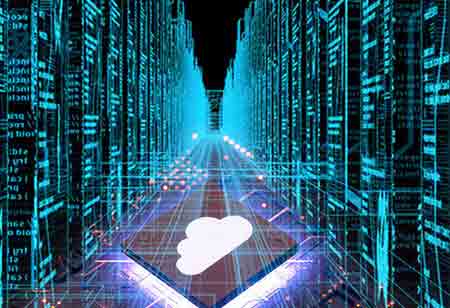THANK YOU FOR SUBSCRIBING
Be first to read the latest tech news, Industry Leader's Insights, and CIO interviews of medium and large enterprises exclusively from Gov CIO Outlook
THANK YOU FOR SUBSCRIBING

By
Government CIO Outlook | Monday, May 23, 2022
Stay ahead of the industry with exclusive feature stories on the top companies, expert insights and the latest news delivered straight to your inbox. Subscribe today.
As attacks intensify, governments must organize their policies and procedures.
FREMONT, CA: Grass Valley, California (population: 12,891) was the victim of an inadvertent cyberattack in 2021. Authorities only lately began notifying citizens whose data had been compromised.
Social Security numbers, driver's license numbers, financial account information, payment card information, restricted medical or health insurance information, passport numbers, and login credentials for an online account were compromised. It was a devastating blow to local government leaders and the people who trusted them, not to mention the ransom paid for the data's release.
It is not surprising that security is a significant priority for all governments, especially after 18 months of implementing new digital ways to communicate with residents and supporting an increasingly remote workforce.
The dangerous environment is becoming more complex, and the stakes are increasing. Every government institution, regardless of size, is confronted with three significant problems as it looks to the future.
How can governments improve security while updating IT infrastructure?
Cybercriminals and state actors are repelled by processes and systems, not policies and frameworks.
Modernizing IT platforms is a top priority for governments. It is recognized as one of the primary actions being done to improve citizen and employee experiences (53 percent) and make operations more resilient (48 percent), according to research commissioned by ServiceNow conducted by ThoughtLab.
Adoption of the cloud enables governments to function more flexibly and efficiently, allowing them to provide greater services to residents. This implies that data must be stored off-site. Entrusting these data to third-party cloud providers creates significant concerns, including:
● How are access permissions to systems and data managed?
● Where are the data centers physically located? Will the data always be stored domestically?
● What duties does the supplier have regarding data security?
Because cloud solutions are so vital to the government's future, cloud suppliers must adhere to increasingly stringent criteria and screening programs to be selected. For example, Australia's Information Security Registered Assessors Program (IRAP) and India's Ministry of Electronics and Information Technology (MeitY) provide cloud service providers with rigorous rules and compliance criteria. These robust accreditation systems ensure that cloud environments continue to improve to meet the highest requirements.
How can government respond to dangers more quickly?
Even with the most effective measures in place, employees will make errors. Errors made by humans are one of the leading causes of data breaches. According to a recent survey from Stanford University, one in four employees had clicked on a phishing email while at work. Nearly half of these workers attribute their errors to simple distractions.
For speedy problem resolution, security and IT teams require a clear, unified perspective of what is occurring throughout the whole business. However, there are frequently various monitoring tools among agencies and departments. When a vulnerability or issue is discovered, concerns are commonly prioritized without clearly understanding which one could have the most impact.
Teams need a more efficient approach to processing all the incoming data. They are increasingly relying on artificial intelligence to expedite data analysis and interpretation. Machine learning and AI may assist teams in identifying the core cause of problems and evaluating operational measures to improve security continuously.
Governments are also considering workflow automation to decrease some of the manual effort required to move information around so that teams receive the appropriate data in the proper time without waiting for an email or spreadsheet to be forwarded.
When technology is integrated into routine interactions, teams can quickly move while maintaining data security.
I agree We use cookies on this website to enhance your user experience. By clicking any link on this page you are giving your consent for us to set cookies. More info

However, if you would like to share the information in this article, you may use the link below:
www.govciooutlookapac.com/news/cybersecurity-in-the-public-sector-a-highstakes-game-nid-1603.html



